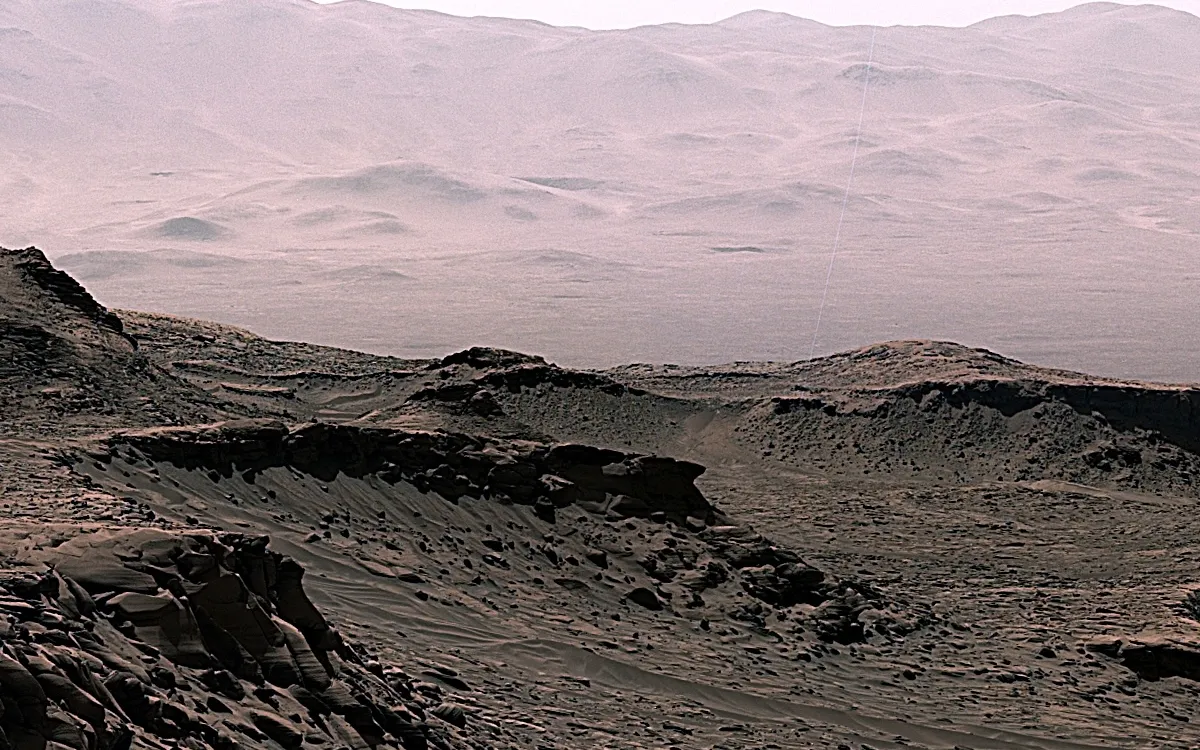
Recent findings from NASA’s Curiosity Mars rover are shedding light on the enigma surrounding the ancient atmosphere of Mars and its evolutionary journey. For years, researchers have posited that Mars was once enveloped in a thick, carbon dioxide-rich atmosphere, complemented by the presence of liquid water on its surface. This theory suggests that the interaction between carbon dioxide and water should have led to the formation of carbonate minerals within Martian rocks. However, until now, rover missions and near-infrared spectroscopy data from orbiting satellites had failed to uncover the expected quantities of carbonate on Mars' surface.
In a groundbreaking paper published in April in Science, researchers reported data from three of Curiosity’s drill sites, revealing the existence of siderite, an iron carbonate mineral, nestled within the sulfate-rich rocky layers of Mount Sharp in Gale Crater. Benjamin Tutolo, an associate professor at the University of Calgary and the lead author of the study, stated, “The discovery of abundant siderite in Gale Crater represents both a surprising and important breakthrough in our understanding of the geologic and atmospheric evolution of Mars.”
To delve into the chemical and mineral composition of the Martian landscape, Curiosity drills down three to four centimeters into the subsurface. The rover then collects powdered rock samples and feeds them into its CheMin instrument. This sophisticated device, operated by NASA’s Ames Research Center in California’s Silicon Valley, employs X-ray diffraction to meticulously analyze the rocks and soil. The data generated by CheMin is subsequently processed and interpreted by scientists at the Astromaterials Research and Exploration Science (ARES) Division at NASA’s Johnson Space Center in Houston.
Thomas Bristow, a research scientist at NASA Ames and co-author of the paper, likened the drilling process to exploring a history book, stating, “Just a few centimeters down gives us a good idea of the minerals that formed at or close to the surface around 3.5 billion years ago.” This significant discovery of carbonate minerals beneath the surface suggests that the presence of carbonate on Mars may be obscured by other minerals in near-infrared satellite analyses.
If it is confirmed that other sulfate-rich layers on Mars also contain carbonates, the amount of carbon dioxide stored could be a mere fraction of what was required in the ancient atmosphere to create conditions favorable for liquid water. This raises the possibility that much of the carbon dioxide could be sequestered in different deposits or has been lost to space throughout the ages.
Future missions or analyses in other sulfate-rich regions of Mars could validate these findings and enhance our understanding of the planet's early history and atmospheric transformations. The Curiosity rover, a key component of NASA’s Mars Exploration Program (MEP), was developed by NASA’s Jet Propulsion Laboratory, which is managed by Caltech in Pasadena, California. JPL oversees the mission on behalf of NASA’s Science Mission Directorate in Washington.
For more detailed information on the Curiosity rover and its ongoing mission, visit: NASA Curiosity Mission.
For further inquiries, please contact:
NASA Headquarters, Washington
202-358-1600